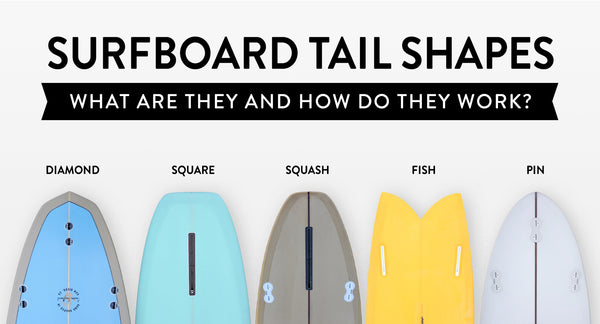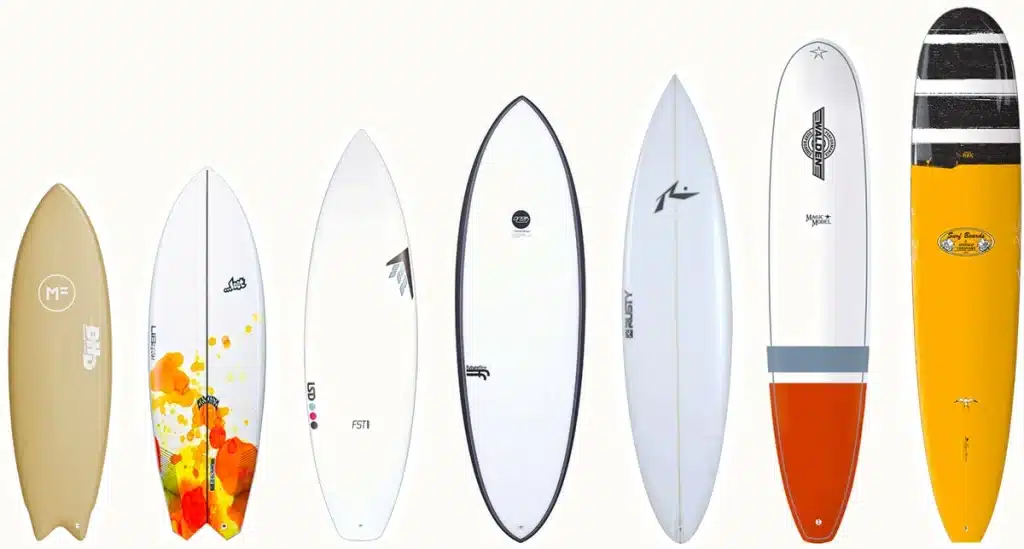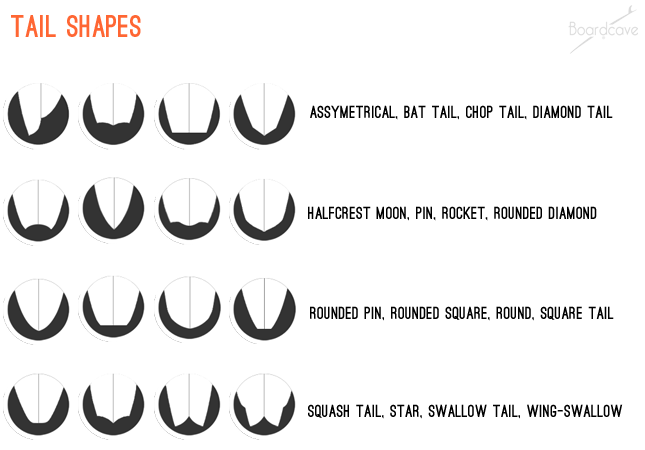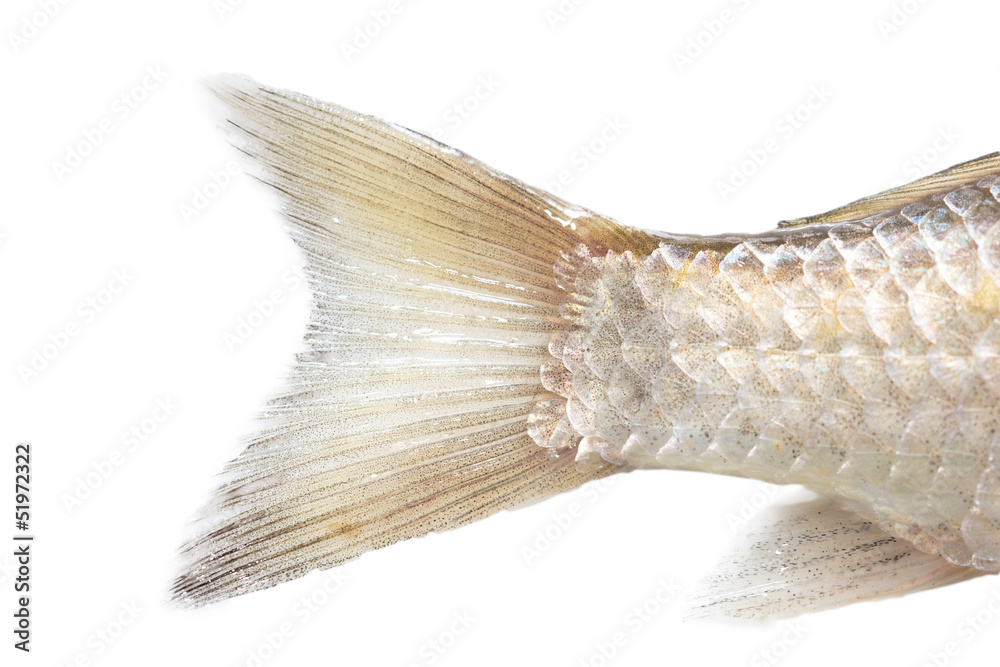SURFBOARD TAIL SHAPES BASICS: WHAT ARE THEY AND HOW DO THEY WORK? - Degree 33 Surfboards

Surfboards come in so many shapes and sizes and beyond that there is the tail shape specifically which is a subject totally on it’s own. We will explain the most common tail shapes and how they work differently from each other. While there are many shapes, generally, these different styles all originate from several basic concepts. So that begs the question, what do these different shapes actually do and does it really matter? First off the tail shape can determine how easily you can catch a wave as well as the turning ability of the surfboard which makes a huge difference in the wave riding experience and stoke level. The main thing you want to pay attention to (aside from the tail's shape) is the tail volume. A wider tail will allow you to catch the wave more easily and
Longboard Surfboards, Fish Surfboards, Shortboard Surfboards, Beginner Surfboards, Paddle Boards, SUP and Inflatable Boards,Wetsuits, Surf Apparel and Surf Gear
Surfboards come in so many shapes and sizes and beyond that there is the tail shape specifically which is a subject totally on it’s own. We will explain the most common tail shapes and how they work differently from each other. While there are many shapes, generally, these different styles all originate from several basic concepts. So that begs the question, what do these different shapes actually do and does it really matter?
First off the tail shape can determine how easily you can catch a wave as well as the turning ability of the surfboard which makes a huge difference in the wave riding experience and stoke level. The main thing you want to pay attention to (aside from the tail's shape) is the tail volume. A wider tail will allow you to catch the wave more easily and will allow you to generate more speed in a straight line where a narrow tail will provide better hold and control on a steeper wave, but may not perform so well in the smaller mushier stuff and will not be as quick in the flat sections of the wave.
We are going to explain the basic differences between fish and swallow tails, rounded pin, diamond, square and squash tails. The different tail shapes suit different surfing conditions and will impact the performance of your surfboard so it is important to know the differences when selecting your new surfboard. So let’s get into it!
Squash Tails: Squash tails are square shaped at the back. This shape gives the back of the board more width or volume. This allows the surfer to perform more precise maneuvers as there is more surfboard under your foot to push against. The corners of the squash tail allow you to project your board through turns. This shape is generally considered to be the most popular tail shape for the modern surfboard. You will get a nice stable ride but still be able to perform loose turns. This tail shape is suited to all standards of surfers. This tail shape is great for everything from tiny waves to your huge surf which makes it a very versatile tail shape. These boards are also very responsive. The rounded corners allow the surfboard to be looser giving great turning on the wave. Due to the versatility of this shape, it is a great option for the longboard such as the Ultimate longboard which is our best selling board. We also use it on our performance shortboard the All Terrain Vehicle.
Rounded Pin Tail: A rounded pin tail is pointed at the back. This shape allows for very smooth cutbacks and turns. This shape of tail will allow for better grip on bigger and steeper waves. If you are planning on only surfing smaller messier waves, this tail shape is probably not the best choice. The rounded pin can be great for medium to larger waves and is ideal for powerful surf. The rounded pin tail ensures the lines of the rails (or edges of the surfboards) are smooth. This tail shape was enormously popular with the single fin surfboard. The rounder the pin, the looser the surfboard. A very versatile and smooth surfboard. This is an amazing riding tail design and is used exclusively on one of our best selling boards The Poacher fun shape.
Swallow or Fish Tail: Swallow or Fish tails can be found in all types of surfboards, they two terms are used interchangeably depending on who you talk to. They are most commonly found on fish surfboards like our Codfather, Easy Rider or Weapon model surfboards. These tails can be great for beginner surfers as well as intermediates as they are so easy to ride. As a general rule swallow or fish tail surfboards can be easier to paddle and can have better drive on the smaller waves due to the greater area of volume in the tail. Swallow or fish tails have the best of the rounded pin and the squash tail combined. The gap in the V of the tail allows the water to flow freely between the two pins providing the surfboard with a better hold when shifting from rail to rail (turning on the wave). This gives the surfboard more direction and hold on the wave. A V in the tail, such as a fish, will allow the surfer to get through the choppy or messy wave more easily.
Diamond Tail: Not as common tail shape as the others mentioned. The diamond tail is a slight variation of the squash tail but the corners bring the shape back to a point at the back of the board forming a diamond shaped point. This shape allows the board to be more pivotal for increased turning ease as compared to a regular squash tail. The shape is also interesting visually which makes for a really cool looking board! We use it on our Over Easy model and have had amazing reviews on the board and the tail shape for both new and intermediate surfers.
Square tail: The square shape at the corners allows for stability, more angular turns and continuity when transitioning from rail to rail. The harder corners give you a skatier feel with extra release. These are great for down the line speed in smaller conditions, the hard corners act as a pivot point for turning the board. The square tail is a more traditional tail type often used on classic longboard shapes like our Classic log. They are less common these days as the squash tail is more common on modern and performance surfboards.
As always if you have any questions on how these will work for you or what board would be the best fit your surfing ability and goals, give us a call at the shop (800) 920-2363 or email surf@degree33.com to discuss your next board.

Surfing - Wikipedia

SURFBOARD DESIGN FOR BEGINNERS - UNDERSTANDING SURFBOARD TAILS

SURFBOARD TAIL SHAPES BASICS: WHAT ARE THEY AND HOW DO THEY WORK? - Degree 33 Surfboards

Best Surfboards for Beginners

The Anatomy of a Surfboard Explained - Jamie O'Brien Surf Experience

The Different Types of Surfboard Shapes Explained

Surfing Explained: Ep7 Tail Outline Shape

Surfboard Tails: The 9 Types and What they Do - Everything Surf

Surfboard Tails Rails and Noses

Background Design With Green Flower Frame Vector Image

Step Up Surfboards






